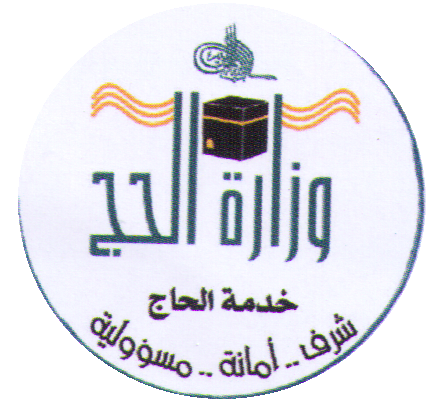


Rituals of Umrah
IHRAM: When performing Umrah, before entering the Holy City of Makkah, you should be in Ihram.
Enter the Holy Sanctuary (al Masjid al Haram), preferably right foot first through the Bab as-Salam gate, reciting the Talbiyah:
'Here I am O Allah, (in response to Your call), here I am. Here I am, You have no partner, here I am. Verily all praise, grace and sovereignty belong to You. You have no partner.'
You may then say: "In the name of Allah, may peace and blessings be upon the Messenger of Allah. O Allah, forgive me my sins and open to me the doors of Your mercy. I seek refuge in Allah the Almighty and in His Eminent Face and in His Eternal Dominion over the accursed Satan."
When you first see the Holy Kaaba, keep your eyes fixed on this the holiest of all structures in Islam. Standing to one side, proclaim:
"Allahu Akbar" three times
"La ilaha illa'Llah" three times
Then proclaim a blessing (Salawat) on the beloved Prophet (peace be upon him) and, in all humility, make your prayers to Allah. This is an especially propitious time to offer prayers to the Almighty.
You may recite some other similar holy verses if you so desire.
After this, while uttering Talbiyah once more and repeatedly, move forward to prepare for the circumambulation of the Kaaba (Tawaf).
To prepare for the Tawaf, the pilgrim must ensure ablutions have been performed. The pilgrim should pass the upper garment of the Ihram (the rida') under the right arm and over the left shoulder, thus leaving the right shoulder bare. This procedure is called iddtibaa'.
When you reach the Black Stone (al-Hajar al-Aswad), you have arrived at the starting point for the circumambulation (Tawaf), and you may cease reciting the Talbiyah.
NIYYAH: You are now ready to perform Niyyah (i.e. express your intention to perform Umrah):
"O Allah, I perform Tawaf of Umrah to please You. Make it easy for me and accept it from me."
ISTILAM: Now, moving right, if space permits, stand before the Black Stone and kiss it. If you are unable to move close enough to kiss the Black Stone, you may touch it with by hand. If you are unable to kiss or touch the Black Stone, place your hands at your ears, palms facing outwards, and say:
"Bismi'Llah Allahu akbar wa li'Lah al-hamad"
This alternative is perfectly acceptable so there is no need for pushing or shoving which may harm yourself or others if you are not able to reach the Black Stone.
This act, whether you kiss the Black Stone, touch it by hand or utter a prayer while pointing by the palm of your hands towards the Black Stone is called Istilam.
TAWAF: You may now begin your seven circumambulations, moving to the right so that you keep the Kaaba to your left, counter-clockwise, around the Kaaba.
When performing the first three circumambulations, men may uncover their right arm and move with quick, short steps. (This procedure is called Ramal.) The remaining four circumambulations should be performed at a normal walking pace.
PRAYERS DURING TAWAF: While performing Tawaf, there are no prescribed prayers but there are a number of supplications which are recommended. You may also use the prayers that form part of your daily prayer sessions and pray to Allah in your own way in your own language.
HATEEM: Hateem is a semi-circular section which originally formed part of the Kaaba but was not incorporated into the Kaaba when the Kaaba was rebuilt. You should include the Hateem in your circumambulations.
When you reach the fourth corner of the Kaaba (Rukn Yamani), touch it with your right hand or both hands and, as you walk between Rukn Yamani and the Black Stone, you may pray:
"Rabbana atina fid-dunya hasanatan wa fil-akhirati hasanatan wa qina azabin-nar".
When you reach the Black Stone, perform Istilam again, to mark the start of your second circumambulation.
Continue in the same way, until you have completed the seven circumambulations, including Istilam at the end of each circuit.
COMPLETION OF TAWAF: On completion of your seven circumambulations, men should cover their right shoulder, thus ending iddtibaa'.
MULTAZAM: Between the Black Stone and the door of the Kaaba is a deeply holy place about two meters in length where it is very good to pray. If you are able to reach this place, pray to Allah for His mercy and for His beneficence. If you are prevented by the number of people from reaching Multazam, simply face towards the area and make your prayers.
MAQAM IBRAHIM: On completion of the seven circumambulations, you should approach Maqam Ibrahim (the Station of Ibrahim) and offer two short prayers (rakaat). Then, if it is possible, you should return to the Black Stone and touch it.
SAFA AND MARWAH: You are now ready to perform the Sa'y, the shuttling between the two hills of Safa and Marwah.
As you approach Safa, you recite the Quranic verse:
"Verily, Safa and Marwah are among the shrines of Allah".
You should now ascend Safa and, facing the Kaaba, make whatever supplication you choose. The Prophet Muhammad (peace be upon him), when he stood on Safa, proclaimed three times "There is no god but Allah".
You should now proceed towards Marwah, walking at a normal pace until you reach the green marker. Men, if they are able, should run until they reach the next green marker, whereupon they should revert to a normal walking pace until you reach Marwah. Women should proceed throughout at normal walking pace. The area between the two markers is where Haajar used to hear her baby Ishmael crying out of thirst while she was looking for help. She ran whenever she heard his cries. When you stand on Marwah, face the Qibla, and repeat the prayers and supplications you voiced at Safa. You are now ready to make the return journey, walking where you should walk and, if a man, running, if able, where you should run. This is your second passage.
You should now repeat the procedure until you have completed seven passages, ending your Sa'y at Marwah. While performing Sa'y, you should pray to Allah as you wish and recite verses from the Holy Qur'an.
CUTTING OF HAIR: On completion of Sa'y, men may shave their heads or shorten/clip their hair. Women should clip their hair one or two centimeters. (If the Umrah is a precursor to performing Hajj, men may not want to shave their heads but merely clip their hair so that there will be enough hair to shave when performing Hajj.)
The Umrah rituals are now concluded and the pilgrim may change into every day clothes. The prohibitions on conduct during Umrah are now ended.
